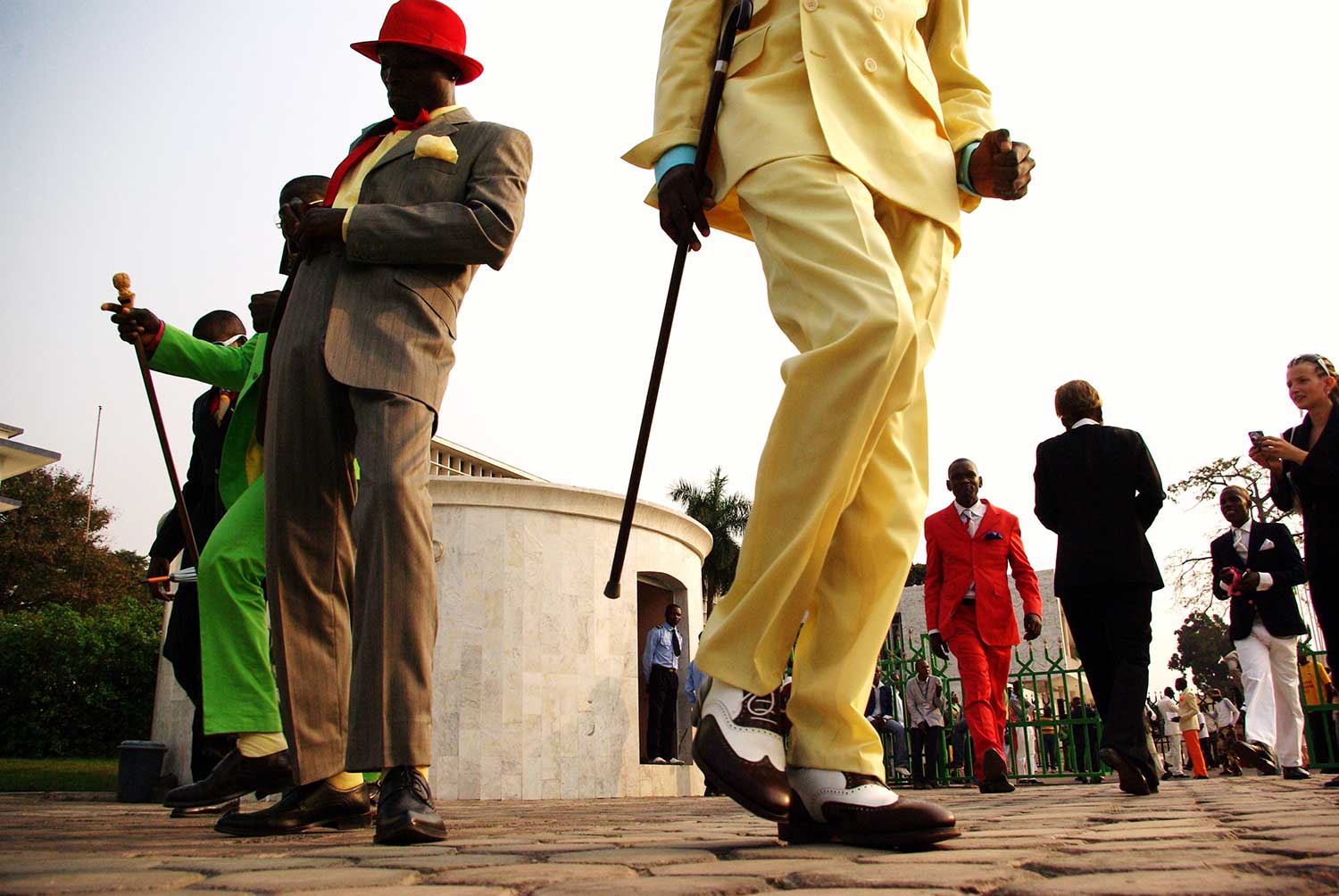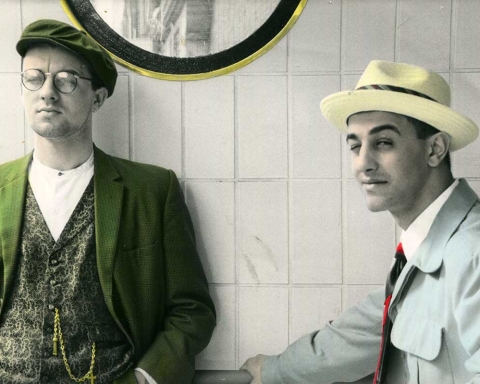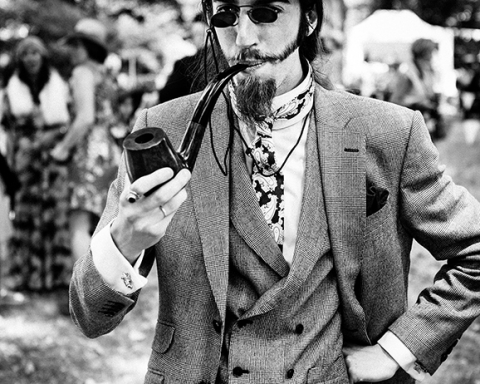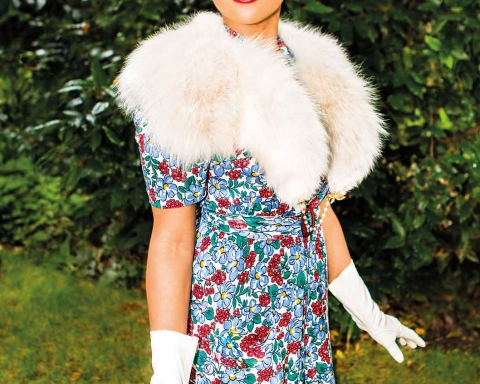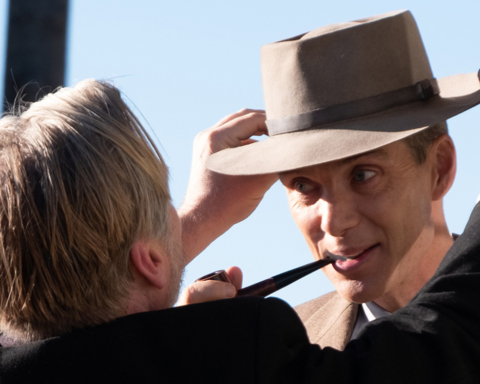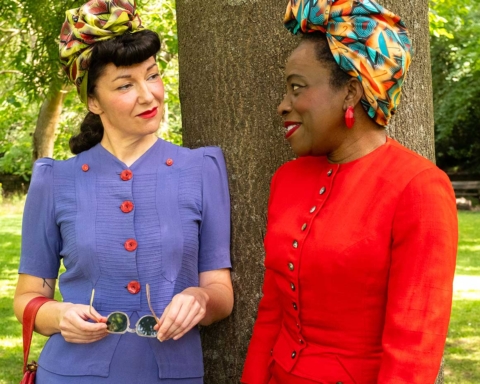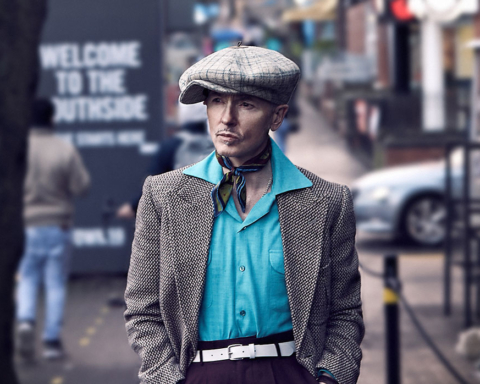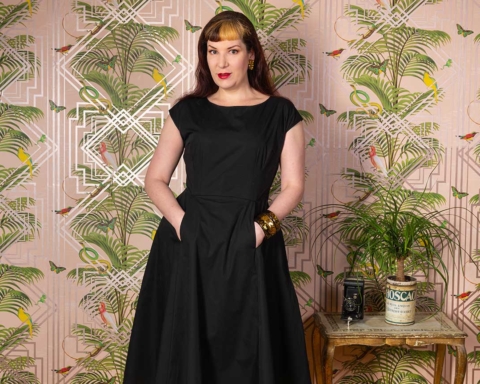
Brazzaville, capital of the Republic of Congo, is host to the Sapeurs: a group of dandies approaching the seriousness of a cult. Brazzaville is poor, like most Central-African nations, and it went through a civil war several years ago, the evidence of which is still pockmarked on quite a few facades. This is the reason the US State Department’s profile of the country includes the delightful sentence “In March 2003, the government signed a peace accord with the Ninjas, and the country has remained stable and calm since the signing.”
Le Sape (The Societe des Ambianceurs et des Personnes Elegantes), is one of the world’s most exclusive clubs. It has recently become an international phenomenon with branches in places like Brazzaville, Kinshasa, Paris, Brussels and parts of South London. The sapeur style and relationship to clothes is unique – a throwback to a lost world of pre-colonial elegance and decadence and at the same time it is futuristic. Members have their own code of honour, codes of professional conduct and strict notions of morality.

The Sapeurs are the members of an unofficial club called “Le SAPE,” which, in French, stands for “The Society for the Advancement of Elegant Persons.” A photo book called Gentlemen of Bacongo by the Italian photographer Daniele Tamagini was published in 2009 to great acclaim. The cover shows a black man in a bright pink suit with matching bowler hat and shoes, striding purposefully toward the camera down a dirt street with crumbling one-story buildings lining it, a cigar clamped tight in his theatrically scowling face. The pictures inside were astonishing: men in beautifully fitted suits in the kind of bright colors which can only be pulled off with conviction by people with the darkest complexions. And they were living amongst squalour.
One owned a book stall and the other was a barber at a salon that advertised its affiliation with “Sapologie.” Despite their casual dress, as we walked to the local beer garden they were hailed by passer-by and respectfully addressed by their Sapeur names: “The King of Colour” and the “Master of Colour.”
Honored to be in the company of such men of distinction, I bought beers and cola for everybody as they bought handfuls of peanuts from passing vendors and carpeted the dirt floor of the beer garden with the shells. They spoke about Sapologie and its importance to them: they saved their money and bought clothes so that on the weekend they could be heroes. They had difficult lives and this was their only outlet for expressing themselves and asserting a kind of dignity absent from their day-to-day existence. For 48 hours they could have elegance.

That weekend I went to “La Main Bleue,” one of the Sapeurs’ regular clubs. It is outdoors, on the banks of the Congo directly across from the hideous skyscrapers of Kinshasa. The courtyard consists of a perimeter of blue plastic patio tables and chairs with a wooden dance floor in the middle. We showed up at sunset and waited for the Sapeurs to arrive. They did not disappoint. Each strode in turn, erect and proud and splendidly turned-out in their most colorful and well-cut gear. Many had beautiful women on their arms. They took their seats around the dance floor, clearly sitting in areas of more prominence than the other patrons. They had come here to be seen by their friendly competitors and the mere mortals ringed round the edge of the yard. Many of them held the trademark Sapeur cigar between their fingers, never lighting it, presumably because they can’t afford to smoke such a luxury item.

I suddenly realized that the Sapeur’s obsession, living for their specific weekend clubs and working hard hours at menial jobs reminded me of another one of the rare examples of a kind of group-dandyism: London’s original mods. As Pete Meaden has said of the mods, this was “clean living under difficult circumstances.” Unlike the other clubs I’d visited in Brazzaville, this one played mostly local rumba for couples to dance to, rather than the rump-bumping “pongo,” in which dancers, in what I suspect is a hangover from Colonial French vanity, face a mirror, holding their upper body forward and their bottom out.
As the night went on I spoke to a few Sapeurs and joined in a couple of dances with an attractive woman who bought me a beer and then turned out to be one of Brazzaville’s more expensive prostitutes. I kindly declined her post-dance offers and spent the rest of the evening watching the Sapeurs. The DJ played their favorite songs, including many by Papa Wemba, a musician from DRC who is generally regarded by many to be the father of Le SAPE. The DJ spoke in quick Congolese French, and repeatedly gave shout-outs to specific Sapeurs, referring to them by their nicknames.

When I left Brazzaville the next day, hangover in head and luggage in hand, braced for over 35-hours of flying time through 7 different airports, my impression was one of fortunate journalistic disappointment: I had met the Sapeurs, I had spoken and danced with them, and I’d learned that they weren’t the fantasy of the photo books. But I’d also learned that potholes, peanut shells and a lamentable lack of affordable cigars can easily be overcome with a stubborn will to elegance.

